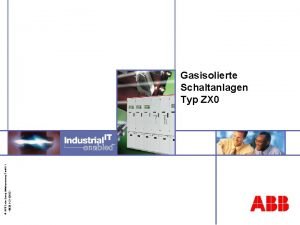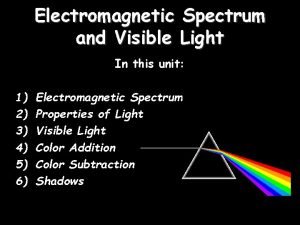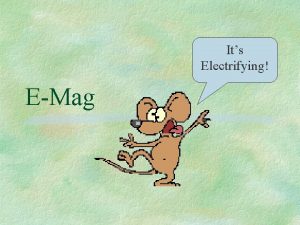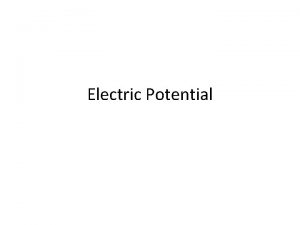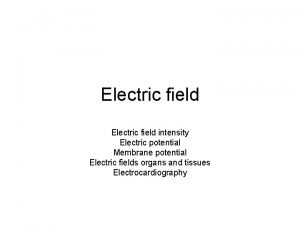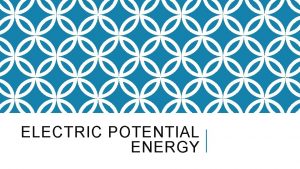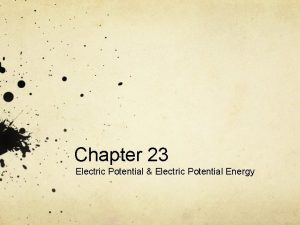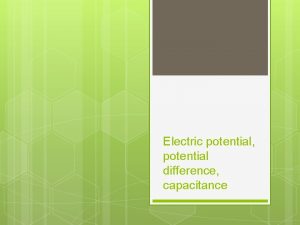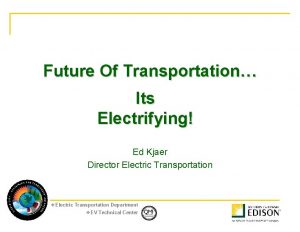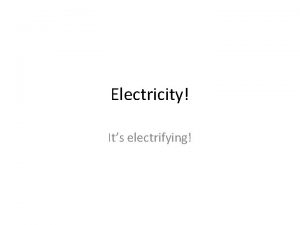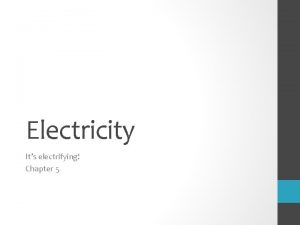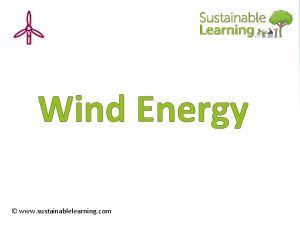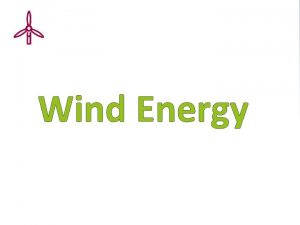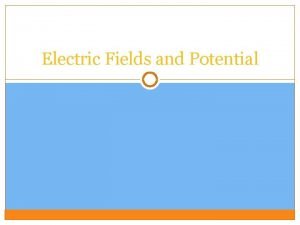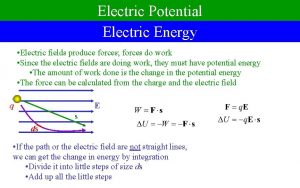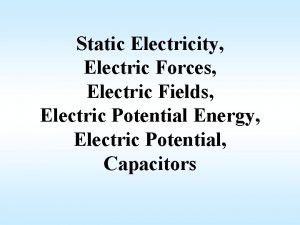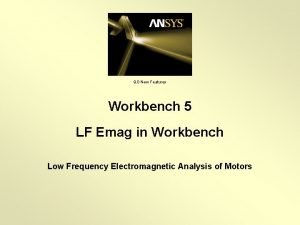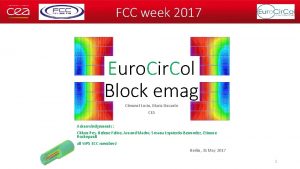Its Electrifying EMag Electric Potential Electric Potential is
































- Slides: 32

It’s Electrifying! E-Mag

Electric Potential § Electric Potential is measured in volts (V) § The total electric potential energy divide by the charge.

§ 1 volt is equal to 1 joule per coulomb. Electric potential is commonly called voltage. § Most outlets in your house are 110 -volts § Some use 220 -volts

Electric Energy Storage § Capacitors are used to store energy. § Voltage between plates of a capacitor become equally but oppositely charged.

Potential Difference § The change in potential (voltage) between two ends of a conductor or between battery terminals. § The flow of charges will continue until there is no longer a potential difference.

Potential Difference § The change in energy between two points in a circuit divided by the amount of charge § V = ∆E/q

Bird on a Power Line SAFE: both feet are on the same voltage line thus no potential difference! NOT SAFE: If one leg is on the ground or another wire and the other one is on the power line, then there is a potential difference between the bird’s two legs.

Electric Current (I) § The flow of electric charges. § Measured in amperes (A) one amp. is equal to the flow of 1 C of charge every second

Current Direction VS. Electron Flow § For purely HISTORICAL reasons, current is conventionally described as going from positive to negative! l The opposite way from electron flow! § Current direction was decided as going from positive to negative well before anyone had any idea of electrons' existence, let alone their being negative!

Voltage Sources § Generators and batteries provide sources of voltage. § Batteries can have either dry or wet cells

Generators § Convert mechanical energy into electrical energy § ex: household generators or car alternators

Batteries § Energy is released during a chemical reaction. § Dry cells (Duracell) have a paste electrolyte. Wet cells (car batteries) have a liquid electrolyte.

Electric circuits are all about energy, not charge § When a battery no longer works, it is out of energy. l l l Chemicals inside the battery undergo a reaction that produces energy. This energy-producing reaction pumps the charge through the battery from low energy terminal to high energy terminal and establishes the electric potential difference across the external circuit. When a battery no longer works, it is because the chemicals have been consumed to the point that the ability of the battery to move the charge between terminals has been severely diminished.

Video: Electricity & Batteries § <embed id="Video. Playback" src="http: //video. google. com/googlepl ayer. swf? docid=110952566405373011&hl=en&fs=true " style="width: 400 px; height: 326 px" allow. Full. Screen="true" allow. Script. Access="always" type="application/x-shockwaveflash"> </embed>

Simple Fruit Battery

Resistance § Opposition to the flow of electric charges. It is increased if length is increased or width of wire is decreased. § Measured in ohms ( )

Electrical Resistance

§ Ohm's Law defines the relationships between (P) power, (E) voltage, (I) current, and (R) resistance. § One ohm is the resistance value through which one volt will maintain a current of one ampere.

Formula § Voltage (V) is equal to Current (I) times Resistance (R) § V = I R Ohm’s Law sim: http: //phet. colorado. edu/simulations/sims. php? sim=Ohms_Law

Electric Current § The flow of electrons

Electric Circuit § Complete conducting path through which charge can flow § For Current (I) to flow, it must include a charge pump and be closed

Fact or Fiction? § When you turn on a light switch, electrons move rapidly from the socket to the lamp to light the bulb.

Electron Drift § Charge moves abnormally slowly on average, about 1 meter in an hour - through a circuit.

Direct Current (DC) § Charges always flow in one direction. Ex: battery § electrons always flow from the neg. terminal to the pos. simulations terminal AC/DC http: //phet. colorado. edu/simulations/si ms. php? sim=Circuit_Construction_Kit _ACDC

Alternating Current (AC) § Current flows in one direction, and then in the other direction…back and forth. Most US circuits operate at a frequency of 60 Hz.

AC/DC

Electrical Relationships Water in a DC in a Electrical Hose Wire Units Pressure Voltage (V) Volts (V) Rate of Flow Current (I) Friction Resistance (R) Amperes, Amps (A) Ohms (Ω)

Electric Power § Rate at which electric energy is converted into another form such as mechanical, heat or light energy.

Calculating Power § Electric power (PE) is equal to current (I) times voltage (V) l measured in watts (W) § PE = I V

Energy Converted § Electricity used (energy converted) is equal to power (k. W) times time (hours) § Eelectric = Pt

What causes electric shock in the human body- current or voltage? § Current passing through the body depends on the voltage applied and the electrical resistance of the body. (ranges from 100 Ω if soaked in salt water to about 500, 000 Ω if the skin is very dry)

Effects of Current on the body § 0. 001 A – barely felt § 0. 005 A – painful § 0. 010 A – muscle spasm § 0. 015 A – loss of muscle control § 0. 1 A (100 m. A) can be fatal if current goes through the heart
 Electric potential
Electric potential Define electric potential and potential difference.
Define electric potential and potential difference. Expression for electric potential difference
Expression for electric potential difference Potential unit
Potential unit Electric potential and potential difference
Electric potential and potential difference Joules per coloumb
Joules per coloumb Electrical potential formula
Electrical potential formula Electric field and electric potential
Electric field and electric potential Abb calor emag mittelspannung
Abb calor emag mittelspannung Www.darvill.clara/emag
Www.darvill.clara/emag Electromagnetic radiation spectrum
Electromagnetic radiation spectrum Source of bioelectric potential
Source of bioelectric potential How to find pressure potential
How to find pressure potential Action potential resting potential
Action potential resting potential Graded vs action potential
Graded vs action potential Hypopolarization
Hypopolarization Understanding water potential
Understanding water potential Difference between sales potential and market potential
Difference between sales potential and market potential Absolute refractory period
Absolute refractory period End-plate potential vs action potential
End-plate potential vs action potential Decremental graded potential
Decremental graded potential Neuronal pool
Neuronal pool Electrical potential
Electrical potential Osmotic potential vs water potential
Osmotic potential vs water potential Why is water potential measured in pascals
Why is water potential measured in pascals Action potential resting potential
Action potential resting potential Definition of graded potential
Definition of graded potential Emigree
Emigree If its square its a sonnet summary
If its square its a sonnet summary When a train increases its velocity its momentum
When a train increases its velocity its momentum Its halloween its halloween the moon is full and bright
Its halloween its halloween the moon is full and bright Sunny cloudy windy rainy
Sunny cloudy windy rainy Its not easy but its worth it
Its not easy but its worth it








